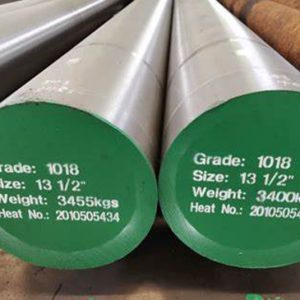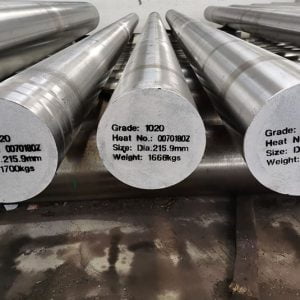Welcome to My Blog!
Before we dive into the content, I’d love for you to join me on my social media platforms where I share more insights, engage with the community, and post updates. Here’s how you can connect with me:
Facebook:https://www.facebook.com/profile.php?id=100087990137347
LinkedIn:https://www.linkedin.com/company/89825762/admin/dashboard/
YouTube:www.youtube.com/@carbonsteelsupply-kj9lw
TikTok:www.tiktok.com/@carbonsteelsupply
Now, let’s get started on our journey together. I hope you find the content here insightful, engaging, and valuable.
Introdução
The 1045 steel composition is a crucial factor that defines its strength, durability, and versatility in various manufacturing applications. As a medium-carbon steel, 1045 offers an ideal balance of carbon, manganese, and other elements, making it a preferred choice for producing everything from automotive components to heavy machinery parts. Understanding the specific 1045 steel composition is essential for manufacturers looking to optimize their processes and ensure the highest quality in their products.
Understanding 1045 Steel Composition

1045 steel is a medium-carbon steel that is widely recognized for its excellent mechanical properties. Its composition typically includes approximately 0.45% carbon, which contributes to its strength and hardness, along with other elements such as manganese, phosphorus, and sulfur. The precise balance of these elements gives 1045 steel its distinctive characteristics, making it suitable for a range of manufacturing processes.
The Elements of 1045 Steel Composition
Understanding the composition of 1045 steel requires a closer look at the key elements that contribute to its properties:
- Carbon (C): The primary element in 1045 steel, carbon, typically constitutes about 0.43% to 0.50% of its composition. Carbon is crucial in determining the hardness and strength of the steel. The relatively high carbon content in 1045 steel allows for better hardening capabilities, which is essential for applications requiring wear resistance.
- Manganese (Mn): Present in quantities of 0.60% to 0.90%, manganese enhances the toughness and hardenability of 1045 steel. It also plays a role in improving machinability and resistance to wear.
- Phosphorus (P): Usually kept to a maximum of 0.04%, phosphorus can increase the strength and hardness of steel. However, higher levels can make the steel more brittle, so its content is carefully controlled.
- Sulfur (S): Also maintained at a maximum of 0.05%, sulfur is added to improve machinability. While it can enhance machining properties, too much sulfur can reduce ductility and toughness.
- Iron (Fe): The balance of 1045 steel composition is made up of iron, which provides the base for the alloy, contributing to its overall structure and strength.
Table: Composition of 1045 Steel Compared to Other Medium-Carbon Steels
| Element | 1045 Steel | 1020 Steel | 1060 Steel | 1095 Steel |
|---|---|---|---|---|
| Carbon (C) | 0.43-0.50% | 0.18-0.23% | 0.55-0.65% | 0.90-1.03% |
| Manganese (Mn) | 0.60-0.90% | 0.30-0.60% | 0.60-0.90% | 0.30-0.50% |
| Phosphorus (P) | ≤ 0.04% | ≤ 0.04% | ≤ 0.04% | ≤ 0.04% |
| Sulfur (S) | ≤ 0.05% | ≤ 0.05% | ≤ 0.05% | ≤ 0.05% |
| Iron (Fe) | Balance | Balance | Balance | Balance |
The Impact of 1045 Steel Composition on Manufacturing Processes
The specific composition of 1045 steel directly influences its performance in various manufacturing processes. The balance of carbon and manganese makes it a versatile material, suitable for forging, machining, and heat treatment. Here’s how its composition impacts different manufacturing methods:
Forging and Heat Treatment
1045 steel’s composition allows it to be easily forged into different shapes while maintaining its strength and durability. The higher carbon content enables the steel to be heat-treated, increasing its hardness and wear resistance, which is particularly beneficial for creating components such as gears, shafts, and axles that require high strength and resistance to deformation.
Maquinabilidade
The presence of manganese and sulfur in 1045 steel enhances its machinability, making it easier to cut, shape, and finish. This makes 1045 steel an excellent choice for manufacturing components that require precise dimensions and smooth finishes, such as pins, rods, and bolts. The improved machinability also translates to lower production costs and faster turnaround times, making 1045 steel a cost-effective option for manufacturers.
Soldabilidade
Although 1045 steel can be welded, its higher carbon content requires careful control during the welding process to prevent cracking. Pre-heating and post-welding heat treatments are often necessary to reduce the risk of weld defects. Understanding the composition of 1045 steel is essential for determining the appropriate welding techniques and ensuring the integrity of the welded joints.
Applications of 1045 Steel in Manufacturing
1045 steel’s balanced composition makes it ideal for a wide range of applications in manufacturing. Its strength, machinability, and ability to undergo heat treatment make it a preferred material for creating components that require durability and precision.
Common Uses of 1045 Steel in Industry
- Automotive Industry: 1045 steel is frequently used in the automotive industry for making gears, shafts, and crankshafts due to its strength and wear resistance.
- Machinery Components: The material’s machinability and toughness make it suitable for producing machine parts such as spindles, pins, and rollers.
- Tool Manufacturing: 1045 steel is used to manufacture various tools that require hardness and durability, such as hammers, chisels, and dies.
- Construction Equipment: The robustness of 1045 steel makes it ideal for use in construction equipment, where components must withstand heavy loads and harsh conditions.
Cost-Benefit Analysis of Using 1045 Steel in Manufacturing

When considering materials for manufacturing, cost is always a critical factor. The composition of 1045 steel offers a balance between performance and cost, making it an attractive option for manufacturers looking to optimize their production processes.
The Economic Advantages of 1045 Steel Composition
- Material Cost: 1045 steel is relatively affordable compared to higher-grade alloys, offering good performance at a lower cost.
- Production Efficiency: The material’s machinability reduces the time and effort required for machining, leading to lower labor costs and increased production speed.
- Longevity of Components: The wear resistance and strength of 1045 steel result in durable components that require less frequent replacement, reducing long-term maintenance costs.
Conclusão
The composition of 1045 steel is a critical factor in its effectiveness as a material for manufacturing. Its balanced mix of carbon, manganese, and other elements provides the strength, machinability, and versatility needed for a wide range of industrial applications. Whether in automotive parts, machinery components, or construction equipment, 1045 steel offers a cost-effective solution that does not compromise on quality or performance. By understanding the importance of 1045 steel composition, manufacturers can make informed decisions that enhance their production processes and deliver superior products.
FAQ
What are the main elements in the 1045 steel composition?
The 1045 steel composition primarily consists of carbon (around 0.45%), manganese (0.60-0.90%), phosphorus (max 0.04%), and sulfur (max 0.05%), with the balance being iron. This composition provides a balance of strength, hardness, and machinability, making it suitable for a wide range of applications.
How does the 1045 steel composition affect its machinability?
The 1045 steel composition, with its specific mix of carbon and manganese, enhances its machinability, making it easier to cut, shape, and finish. This makes 1045 steel an excellent choice for manufacturing precision components that require smooth finishes.
Can the 1045 steel composition be altered for specific applications?
While the basic 1045 steel composition is standardized, certain treatments and processes, such as heat treatment, can modify its properties to better suit specific applications, such as improving hardness or wear resistance.
Why is understanding the 1045 steel composition important for manufacturing?
Knowing the 1045 steel composition is crucial because it directly impacts the material’s performance in various manufacturing processes. Understanding its composition allows manufacturers to select the right material for their needs, ensuring optimal strength, durability, and cost-effectiveness.
How does the carbon content in the 1045 steel composition influence its properties?
The carbon content in the 1045 steel composition, typically around 0.45%, is key to its strength and hardness. Higher carbon content allows the steel to be hardened through heat treatment, making it more suitable for applications that require increased wear resistance.





